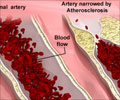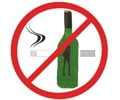
- Alcohol preference of an individual is associated with lifestyle factors and socioeconomic condition.
- The choice of alcoholic beverages may directly influence heart health
- Association between alcoholic beverage preference and cardiac and lifestyle factors
‘EetMeetWeet’
The research study was called ‘EetMeetWeet’ and email mailers were sent to people to join the program. 7437 people from neighboring communities were included in the study, out of which 2048 people agreed to answer a nutrition questionnaire.- Dietary intake
- Fiber content
- Macronutrient
- Vitamin intake
There were three classifications of alcohol beverages in the food frequency questionnaire - wine, beer and spirits, where sprits include rum, whiskey, gin and liqueur. A person was considered to have a preference for a particular alcoholic beverage if the total number of reported glasses consumed was more than 70%.
Analysis of Dietary Patterns
The various factors that were analyzed were:
Factor 1: Meat-rich Diet - This included meat, cooking fat, potatoes with a low intake of vegetables, rice, legumes and whole wheat pasta.
Factor 3: Salads - High intake of vegetables and fruits, salad dressing and oils, fish, eggs and soup with low intake of sweets, cookies, snacks.
Factor 5: Potatoes - This diet included high consumption of potatoes, sweet, cookies, full-fat dairy, cooking fat, white bread, tea and coffee.
Factor 6: Low-fat Dairy and Cereals- This diet includes high consumption of low-fat dairy and cheese, cereals, rice, whole grain pasta with low intake of cooking fat and sweets.
Apart from the dietary questionnaire, there were other parameters of the study participants that were measured:
- BMI
- Total body fat percentage
- Total cholesterol
- High Density Lipoproteins (HDL)
- Low Density Lipoproteins (LDL)
- Alanine aminotransferase
- Aspartate aminotransferase
The results of the study showed that wine drinkers had high HDL cholesterol and lower HbA1c. These people also showed a greater inclination towards a salad diet and showed a better physical status than beer drinkers. Earlier studies have shown that moderate alcohol consumption lowered the risk for diabetes among women by 25-30%. There was also another study that found that high HDL cholesterol was the reason behind an inverse relationship between alcohol and diabetes.
Beer Consumers
People who drank beer had higher blood pressure and showed greater adiposity in the mid region. This shows that the term ‘beer belly’ is a reality with most men showing greater fat storage in the abdomen. The increased waist circumference has been shown to increase cardiac health risk. Liver enzymes have also been found to be high in people who preferred beer due to the consumption of absolute ethanol. Moreover, beer drinkers were more likely to prefer a ‘meat’ and ‘bread’ diet.
The study showed that the preference for specific alcohol beverages was not solely dictated by the health condition of the individual but also depended on the socioeconomic and lifestyle factors. This would mean that making a conscious choice for the ‘healthier’ alcoholic beverage would be a more sensible option.
Reference:
- Diewertje Sluik, Elske M Brouwer-Brolsma, Jeanne H M de Vries, Anouk Geelen, Edith J M Feskens “Associations of alcoholic beverage preference with cardiometabolic and lifestyle factors: the NQplus study”; BMJ Open 2016















